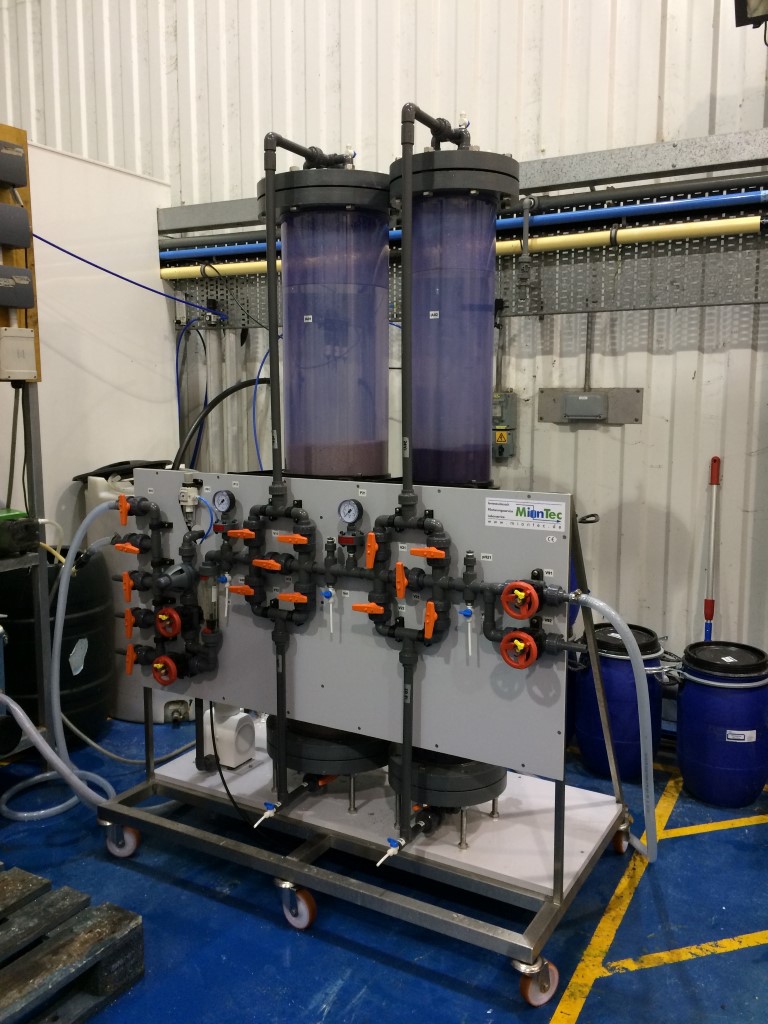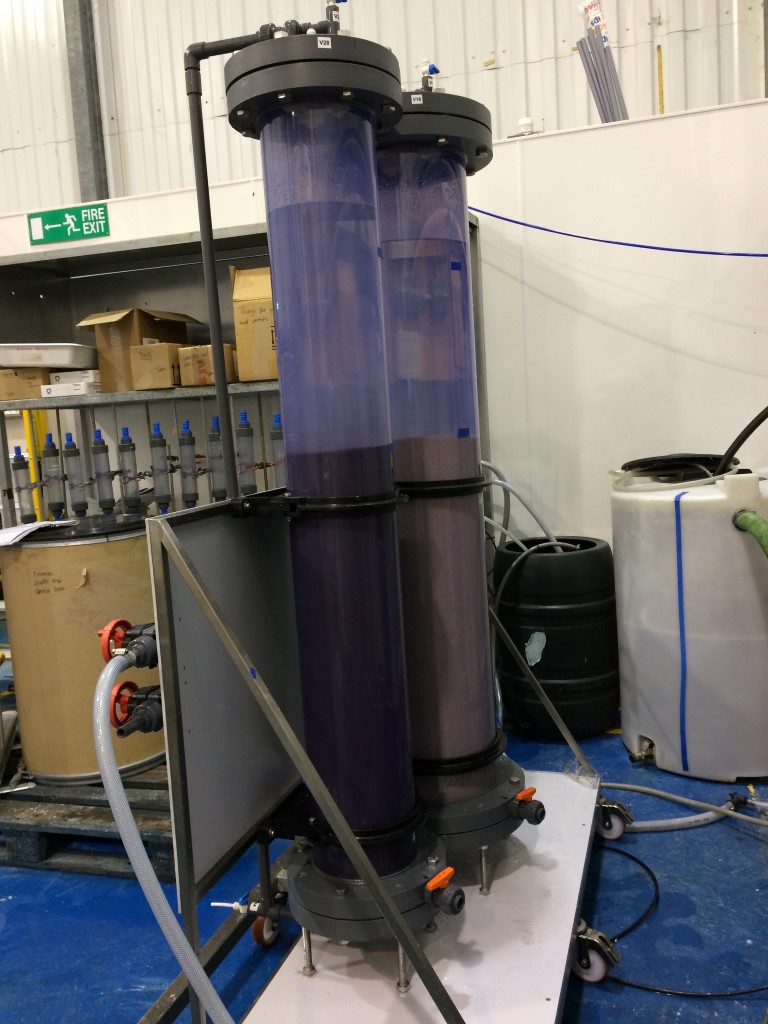|
SMARTech n. |
Integrated municipal WWTP |
Key enabling process(es) |
SMART-product(s) |
|
SMARTech3 |
Cranfield (UK) |
Mainstream tertiary hybrid ion exchange |
Nutrients |
Cranfield WWTP treats domestic wastewater from the Cranfield University campus including offices, student accommodation halls, 2 hotels as well as street and airfield run-off. The influent flow is 675 m3/day (dry weather -2,840 Population equivalent). Wastewater treatment process includes primary and secondary treatment followed by filtration.
SMARTech3 is the key to enable tertiary recovery of N and P based fertilizer based on ion-exchange processes to remove and recover nutrients from secondary effluents. Two different ion exchange media applied which were able to successfully capture/remove ammonia and phosphate from the secondary effluent. To overcome the limited supply chain of the ion exchanging materials, new ion exchange media, manufactured in the UK, were applied. The aim was to optimize the regeneration cycles for the nutrient recovery, trying to maintain a high sorption capacity after each regeneration cycle.
The overall SMARTECH3 includes: 1 micro-screen filtration for secondary effluent solids removal, 1 ion exchange process for ammonia (N) removal with MesoLite media; 1 ion exchange process for phosphorus (P) removal with hybrid ion exchange media (HAIX) media, regenerant storage tanks (NaCl and NaOH), regenerant rinse water tanks and nutrient recovery processes: liquid-liquid membrane process for ammonia recovery, producing ammonium sulfate and a mixing tank and filter for phosphate recovery as calcium phosphate (hydroxyapatite).
SMARTech3 was operated as demonstration plant fed with 10m3/day of secondary effluent at the Cranfield University pilot-hall. The new system will be applied at the Cranfield municipal WWTP (UK) and will treat approximately 10-60 m3/d.
Highlights and main results
- Ion exchange processes can be used to remove and recover N and P from municipal wastewater, without start-up lag and min impact of temperature
- Multiple use and recovery of regenerants leading to an economic feasibility of the IEX technology in the wastewater industry
- Recovery of high purity products hydroxyapatite and ammonium sulphate
Impact of the system
- Reduction in energy of up to 38%
- Reduction in GHG emissions, estimated at 10-20%
- Significant reduction in footprint
- Recovered hydroxyapatite up to 3.4 tonne/year
- Recovered ammonium sulphate up to 98 tonne/year





